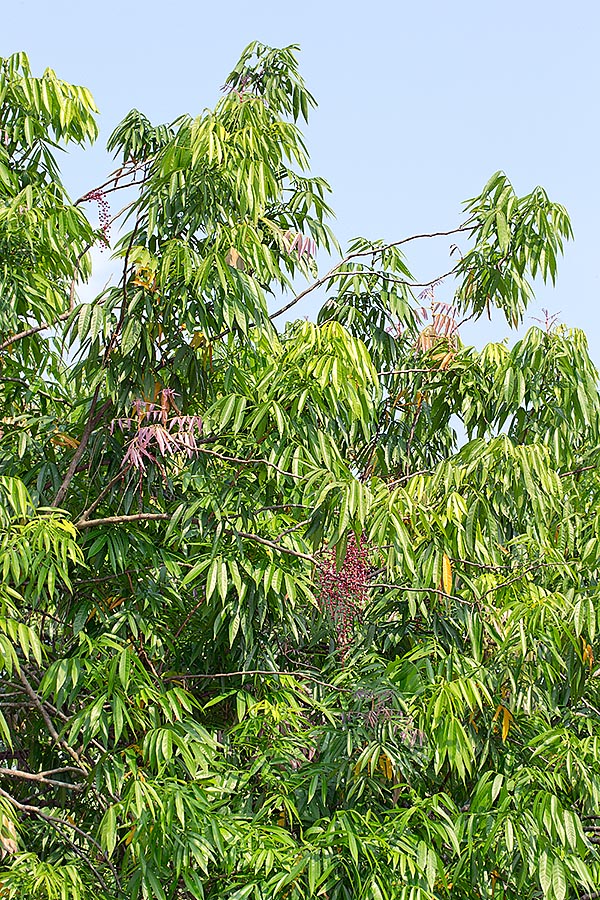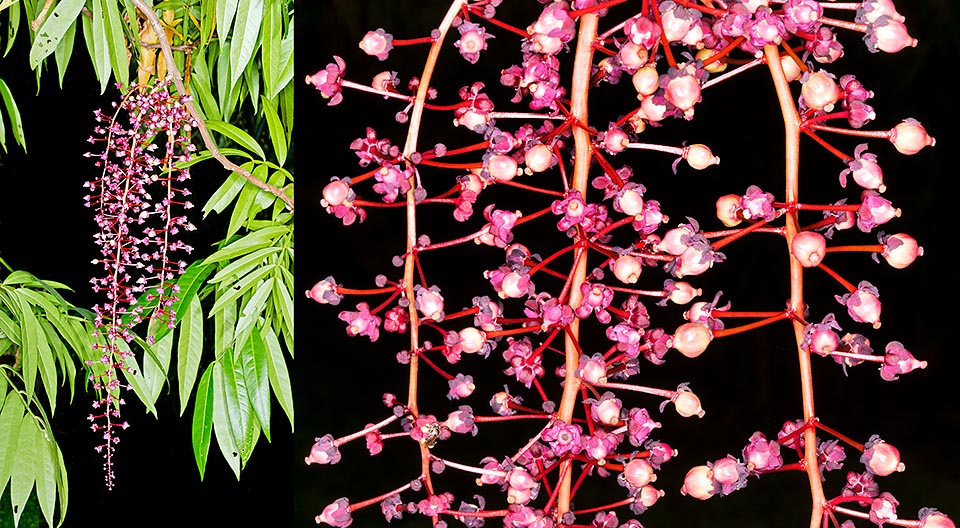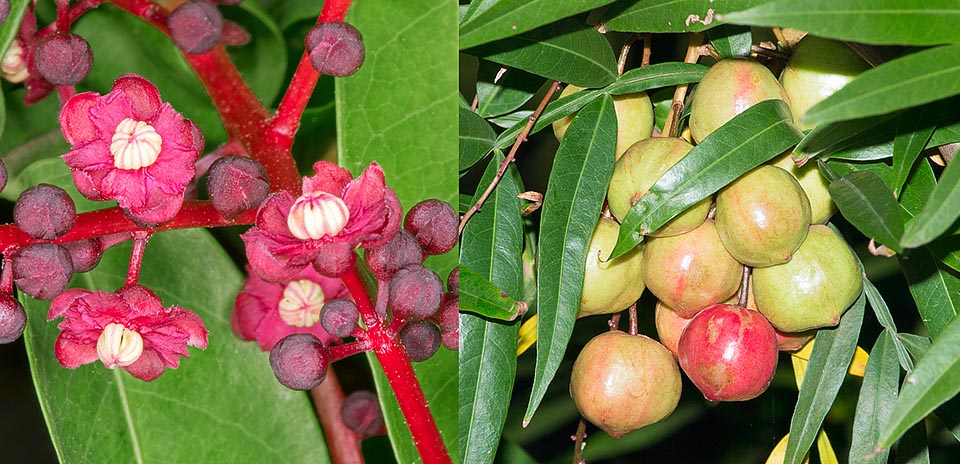Family : Sapindaceae

Text © Pietro Puccio

English translation by Mario Beltramini

Native to Indonesia and Malaysia, Lepisanthes alata can be 4 to 10 m tall © Giuseppe Mazza
The name of the genus is the combination of the Greek terms “lepis” = scale, flake and “anthos” = flower, with reference to the scales at the apex of the petals; the name of the species is the Latin adjective “alatus, a, um” = winged with reference to the winged rachis.
Common names: Chinese averrhoe, Johore fruit, malaysian lepisanthes, trengganu cherry (English).
The Lepisanthes alata (Blume) Leenh. (1969) is a shrub or a 4-10 m tall tree with trunk up to about 30 cm of diameter and greyish bark.
The leaves, on a 2-10 cm long petiole, are usually odd-pinnate, 20-50 cm long, with 3-6 pairs of opposite or sub-opposite leaflets, sessile or sub-sessile, lanceolate with long pointed apex and central nervation protruding below, 8-15 cm long and 2-5 cm broad, initially of pale purple colour, then green, the terminal leaflet, if present, is of an extremely reduced size; petiole and rachis are provided with the margins of two up to 0,8 cm broad wings.
Usually drooping inflorescences carrying unisexual flowers on the same plant of about 8 mm of diameter, with 5 obovate, about 4 mm long, sepals and 5 orbicular petals, almost of the same dimensions, of purple colour.
The male inflorescences are axillar, 20-30 cm long, with sessile fascicles of 3-5 flowers, the female inflorescences, axillar or directly from the branches or from the trunk, are up to 50 cm long, with generally solitary flowers on an about 1 cm long pedicel.
The fruits are 3-4 cm long obovoid berries of 2,5-3 cm of diameter, with pointed apex, of red to glossy dark purple colour when ripe, containing 1-4 ellipsoid seeds with white fleshy aril.
It reproduces by seed in organic loam, with addition of coarse sand or agri-perlite for a 30% to improve the drainage, maintained humid at the temperature of 25-28 °C, with germination times of 2-4 weeks and first blooming starting from the fourth year of age.

The even 50 cm long female inflorescences usually have solitary flowers on an about 1 cm long pedicel. Fruits are tasty edible berries with little pulp © Giuseppe Mazza

Close-up of the purplish flowers and the fruits, shiny and flamboyant when ripe to attract the attention of the birds who care the seeds dispersion © Giuseppe Mazza
Synonyms: Otophora alata Blume (1847).
→ To appreciate the biodiversity within the SAPINDACEAE family please click here.
